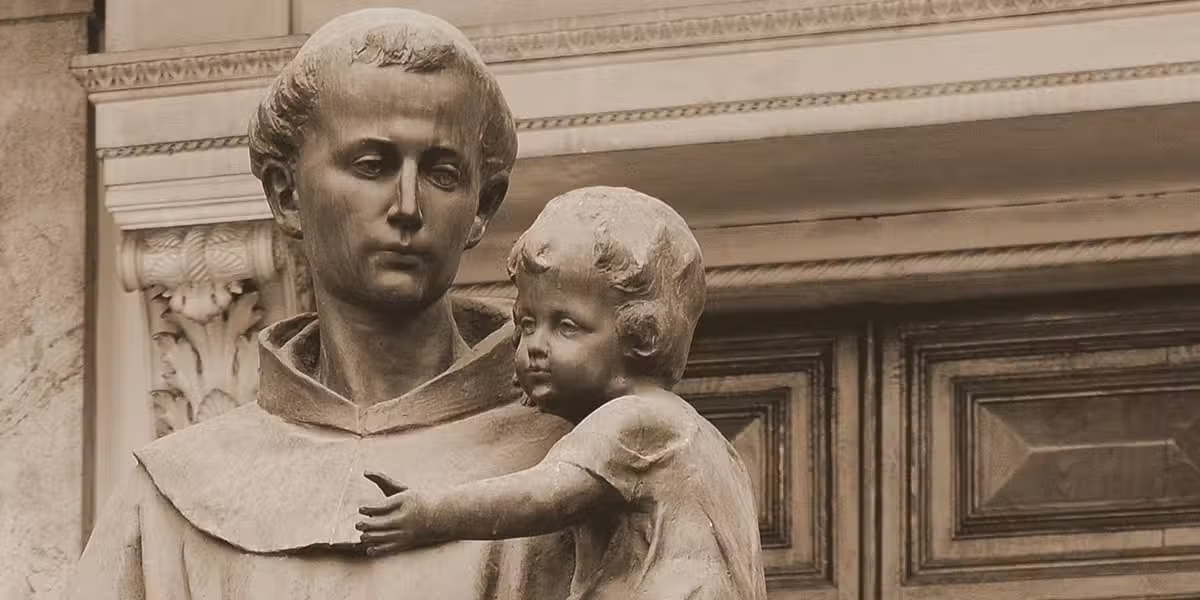“A solution lies not in one side versus the other, and not in running away from today’s lepers.”
There are three giants in the earliest years of Franciscanism: Sts. Francis, Clare, and Anthony. Francis and Clare, of course, were founders. In the broadest sense, one could think of Francis as the heart of the movement, a heart profoundly engaged with the world, seen through the lens of poverty. Clare, as Franciscan scholar Ilia Delio, OSF, describes her, was a woman who coupled her own engagement in the real world with contemplation found in poverty and in a lifelong struggle against men to fulfill her radical calling.
What Francis and Clare were showing in deed, St. Anthony of Padua brought to the booming movement in word. Yes, he was a Franciscan in his poverty and in his radical lifestyle. He brought, though, intellectual formation both as a tool for evangelism and as a foundation for ministry. Interestingly, all three were from well-off families.
Anthony had been a trained priest in Lisbon, one who was moved by the witness of friars to join the Franciscan movement. He sought to follow the friars, possibly in martyrdom, engaging Muslims in Morocco. Instead, he wound up in Italy, called to bring his intellectual formation to bear on the rapidly growing Franciscans. The little group that had followed Francis into poverty outside Assisi’s walls had grown wildly, in a short time, to thousands of friars.
Anthony joined the friars at a time when they were sorely in need of his skill. Friars knew simplicity, but there was a war of ideas happening around them too. Anthony took to preaching Scripture and, with Francis’ approval, teaching the friars sacred theology. In granting permission to Anthony to chart this new Franciscan course, the founder said Anthony could teach the friars “as long as you do not extinguish the spirit of prayer and devotion with study of this kind.” As scholar Dominic Monti, OFM, notes, St. Francis may well have granted this permission begrudgingly, realizing both that the Franciscans needed more formation and that more formal education would introduce a worldly temptation.
A Faithful Path
That’s all very interesting—or boring, depending upon your take. But it’s relevant as we consider the Franciscan spirit today. There are foundations of heart, spirit, and intellect in each of these Franciscan heroes, and we need to retain all three as we consider how to be modern followers of Francis.
For Anthony, understanding Christianity correctly involved not only deep knowledge of Scripture (and, of course, sharing that knowledge) but also establishing social justice. In Father Dominic’s telling, it was reconciliation among warring political factions and relieving the poor of unjust debts. Sound familiar?
Today’s society is as fraught as Anthony’s with warring ideologies, violence among competing political interests, religion mixed in with politics, struggles for power, injustice against the poor, and more. Especially in our country, it’s also competing religious visions—some see religion as something disengaged from the world, while others see religion as justifying one or another political cause.
Like the earliest Franciscans, we can see that a solution lies not in one side versus the other, and not in running away from today’s lepers, but in finding a faithful path among the factions and maintaining a fruitful presence among the poor.
We know from our Catholic tradition that a faithful path includes seeing our social reality through the lens of Gospel values. That means advocacy for life “from womb to tomb,” one that includes protection of the unborn and the dying, without a doubt, but also includes protecting the vulnerable who are somewhere between womb and tomb. Beyond protection for the powerless, it also involves the work of justice, of helping people get on their feet and utilizing the power that human dignity gives to each of us. We not only ensure that our newest little ones are born, but also that they live in economic security. We advocate for a dignified death just as we have advocated for a dignified life along the way.
Flowery as it may sound, it all gets real and challenging as we practice this Gospel sense. We actually work to protect the unborn. We work to provide shelter and dignity to homeless people. We use our vast resources to provide opportunity rather than barriers to immigrants, to pursue alternatives to for-profit prisons, to judge our social policies and our elected leaders against the measure of justice.
Along the way, in the spirit of Francis, of Clare, of Anthony—of Jesus himself—we seek joy. But ours is not some kind of plastic joy, ignoring the pain of the world so that we can be ever-smiling but unconcerned Christians. We seek the joy that comes from being who God wants us to be in the world. It’s not the joy of empty fervor; it’s the joy of standing with people weak and strong, doing the work of justice, praying the prayer that opens our hearts, walking the talk of Christianity.
It’s the joy of digging in with Anthony and doing our homework so that we can speak not only with the authority of personal witness, but also with the authority of spiritual formation. Book learning is part of the package. That, perhaps more than anything, is the spirit of St. Anthony, inspired by the spirit of St. Francis.


